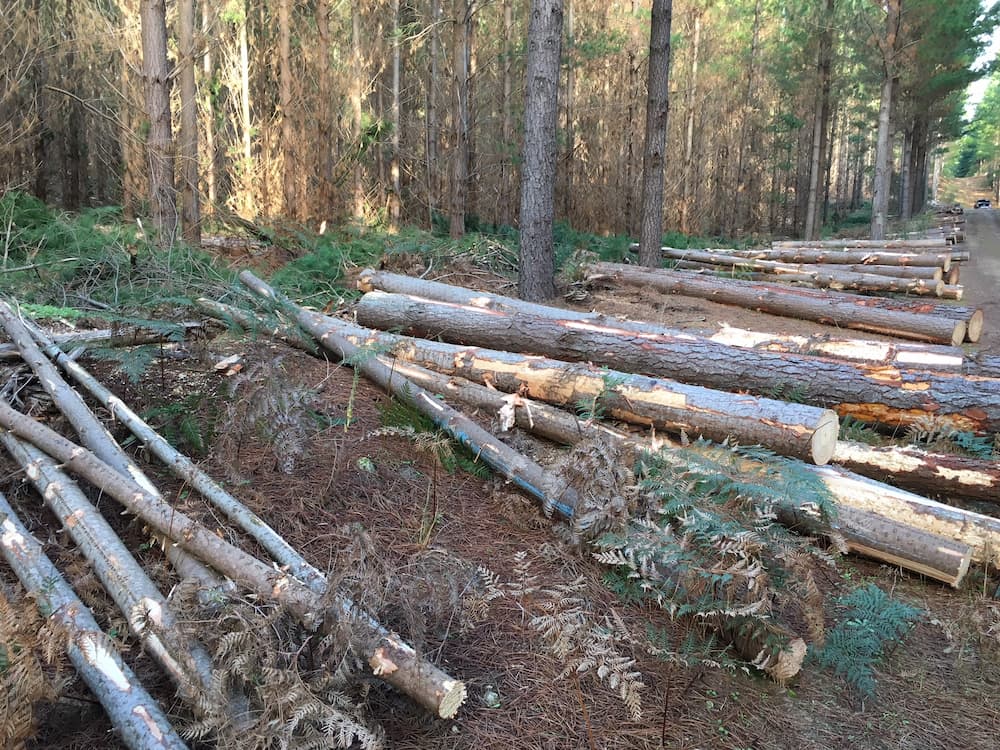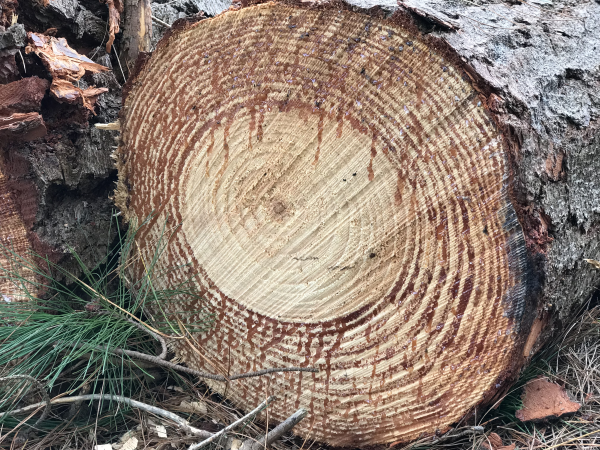Characterising utility performance and in-grade properties of solid structural timber recovered from radiata pine T2 logs, top logs from CF, and core wood from current sawlogs.
Lead Researchers: Dr Louise Wallis, Associate Professor Jon Shanks, Professor Gregory Nolan, Associate Professor Rameez Rameezdeen, Dr Jim O'Hehir
The Project
Pine top and thinning logs, and the corewood of larger logs comprise mainly juvenile fibre and are therefore not typically processed for structural timber framing products. The limiting factor is often board instability in production and in-service compared with market expectations. However, alternative log and fibre sources become important in a market when availability of traditional sawlogs limits production volumes. Using Western Australian pine product, this scalable project will provide a capture critical performance data as a foundation for further research and development using this alternative fibre supply to meet market demand for timber construction and EWP feedstock.
This project’s key objective is to characterise radiata pine boards recovered from underutilised T2, third logs, and core wood by characterising its in-grade structural properties to AS/NZS 4063-2010 and determining their stability and movement characteristics at the time of testing and simulated in-service.
Industry Partners
The University of South Australia, University of Tasmania and Wespine will collaborate on this project with Hancock Victorian Plantation, Green Triangle Forest Products.
Project Deliverables
This project will provide wood processors and forest managers with reports on the log resource and characteristics of board recovered from a high juvenile fibre radiata pine resource. These will cover:
- The assessed characteristics of harvested pine stands and recovered high juvenile fibre logs.
- Board recovery and industry grading of board from representative T3, third logs and core material.
- Results of structural and material testing and in service assessment.
- A summary of the finding, drawing connections between the assessed results, the potential of similar forest stands, and the performance requirements of structural and other applications in building.


Potential Impacts
The project focuses on the processing sector’s potential to mill an existing underutilised forest resource, high juvenile fibre radiata pine logs and core wood, into more valuable products or EWP feedstock by characterising this resource’s potential to be ‘fit-for-purpose’ given the performance requirement of current or new applications in building construction. It also seeks to establish a research methodology for the project’s potential future expansion nationally.
While volume recovery and value equations vary greatly by region, estate and producer, WA industry information supports broad estimates of national volumes and impact. Conventional sawlog supply to states outside of WA is approximately 9 million m3. In addition to this, there is an estimated 2 million m3 of T2 thinnings, and 0.6 million m3 of third logs. If milled to board, these T2 and thirds could yield approximately 1.3 m3 of board, and similar amount of chips. Of the boards, about 0.45 million m3 may make an accepted MGP grade while the remaining 0.85 m3 would be lower grade structural core boards. At the same time, milling conventional sawlogs produces about 1.6 million m3 of core boards in addition to MGP graded material.
In combination, the resources provides a potential pool of lower grade structural core boards of approximately 2.5 million m3 that could be used for applications in buildings.
This pool will only be available if it generates additional value to the supply chain and the material can be introduced to the market as a ‘fit-for-purpose” product. Additional value can be estimated using broad value assumptions for export chips of about $80 /m3, for landscaping and packaging products of about $300 – 350 /m3, for lower grade structural core board of about $500 /m3, and for MGP products of about $720 /m3.
Applying these prices to the board and chip volumes potentially recovered from T2 and thirds logs, total product value is about $860 million. This has to be compared to current value recovered from the resource, which may be about $520 million. Application of these price levels to the core boards from conventional milling, the increase of value to the current production industry is $283 million, if this material is successfully reallocated from landscaping and packaging products to lower grade structural ones. Production costs would remain largely unchanged.
In combination, this indicates that there may be up to $627 million of addition value generated in the supply chain to the end of board production. Additional value could be generated further along the supply chain if this material is converted to EWPs or buildings. Overall, some of this value would accrue to the grower, some to producers, and some to the EWP manufactures and builders. Significant social and environmental benefits would also accrue as this resource moves from supplying low service life fibre and packaging applications to longer service life products for buildings that could replace carbon-intensive non-renewable products.
However, this potential increase in value is only possible if the material can be introduced to the market is a product that is ‘fit-for purpose’ in applications. Obviously, the proposed project will not generate these benefits directly. However, it will contribute to the technical base and industry confidence necessary to mill and deliver these products to the building market.





